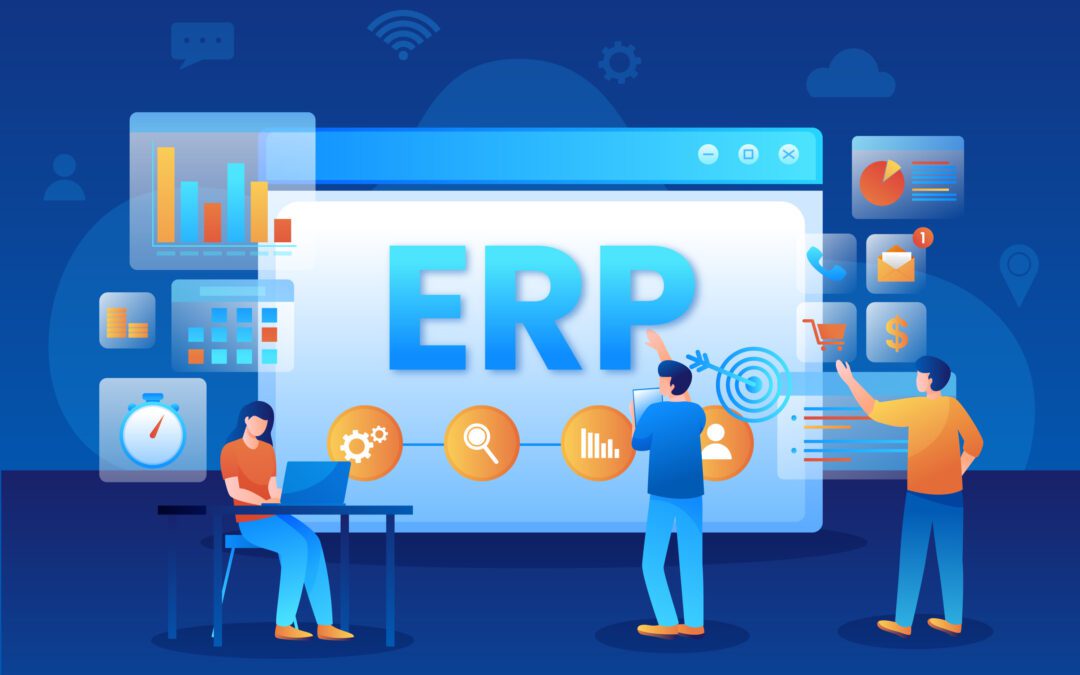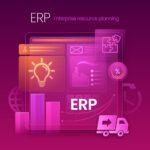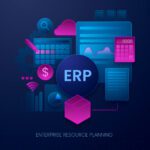In today’s rapidly evolving industrial landscape, Enterprise Resource Planning (ERP) software has become an indispensable tool for modern manufacturing businesses. Whether you’re a small factory or a global production powerhouse, ERP systems provide the backbone for streamlining operations, reducing costs, and enhancing productivity.
But why exactly is ERP manufacturing software so important?
In this comprehensive guide, we’ll explore the core benefits, functionalities, and long-term impacts of ERP systems on manufacturing. If you’re planning to implement ERP software or simply want to understand its role in modern-day production, this article is for you.
Table of Contents
What is ERP Manufacturing Software?
ERP (Enterprise Resource Planning) software is a comprehensive system that integrates and manages all core business processes, including production planning, procurement, inventory, logistics, finance, and human resources.
In a manufacturing context, ERP connects shop floor data with business-level decisions, providing a single source of truth across departments. This allows teams to work cohesively and ensures that decisions are made based on accurate, real-time data.
The Evolution of Manufacturing Needs
Manufacturing has come a long way from the days of manual logs and spreadsheets. With globalization, just-in-time production models, and complex supply chains, businesses now face:
Increased customer expectations
Pressure to reduce lead times
The need for real-time reporting
Regulatory scrutiny
Competitive pricing demands
To survive and thrive in this dynamic environment, manufacturers must embrace automation, integration, and data-driven decision-making—exactly what ERP offers.
Key Features of ERP Software for Manufacturing
Modern ERP systems provide a modular and scalable platform that manufacturers can tailor to their needs. Here are some key features:
1. Production Planning and Scheduling
Create detailed schedules based on capacity, materials, and labor availability.
2. Inventory and Warehouse Management
Track inventory levels in real time, reduce waste, and automate reordering.
3. Supply Chain Management
Coordinate procurement, monitor vendor performance, and optimize logistics.
4. Quality Assurance
Implement quality checkpoints, monitor defect rates, and enforce corrective actions.
5. Finance and Accounting
Automate billing, payroll, budgeting, and financial reporting.
6. Human Resource Management
Manage employee data, roles, training, and shift planning.
7. Business Intelligence and Reporting
Gain insights with custom dashboards and detailed analytics.
How ERP Boosts Operational Efficiency
Imagine running a factory where each department uses its own tools and methods. Sounds chaotic, right?
ERP eliminates silos by centralizing data and automating workflows across:
Sales orders
Production schedules
Purchase requisitions
Customer service tickets
This results in:
Faster turnaround times
Reduced manual errors
More collaboration between teams
For example, when a sales order is placed, the ERP system instantly checks inventory, initiates procurement if needed, and updates the production schedule. No need for manual handoffs.
Cost Reduction through ERP Implementation
Implementing ERP may seem expensive upfront, but it leads to significant cost savings in the long run. Here’s how:
✅ Reduced Waste
By monitoring resources in real-time, ERP minimizes overproduction and excess inventory.
✅ Better Forecasting
ERP systems use historical and real-time data for accurate demand forecasting, avoiding costly miscalculations.
✅ Lower Operational Costs
Automated workflows mean fewer labor hours spent on administrative tasks.
✅ Minimized Downtime
ERP alerts you about equipment servicing needs, reducing unexpected breakdowns.
ERP and Inventory Management
Inventory management is the beating heart of manufacturing. Overstocking ties up capital, while understocking delays production.
ERP software provides:
Real-time inventory visibility
Batch and serial number tracking
Automated reorder points
Multi-warehouse support
This ensures optimal stock levels and accurate order fulfillment.
A study by Aberdeen Group found that companies using ERP systems reduced inventory levels by up to 20% while improving order accuracy by 97%.
Improving Supply Chain Visibility
Supply chain disruptions can paralyze production. ERP systems improve supply chain resilience by:
Tracking shipments in real time
Providing end-to-end vendor management
Integrating with supplier portals
This level of transparency makes it easier to pivot quickly when issues arise, such as vendor delays or raw material shortages.
Plus, ERP helps enforce supplier contracts and SLAs, improving accountability and collaboration.
ERP’s Role in Quality Control
Consistent product quality is non-negotiable in manufacturing. ERP systems integrate quality management tools that:
Record inspection results
Flag non-conformities
Trigger corrective actions
Store compliance certificates and test reports
Some ERP solutions even include real-time quality dashboards, helping QA managers track defect trends and root causes.
When integrated into the production line, ERP can automatically halt production if defects are detected—saving time and money.
ERP and Regulatory Compliance
Whether it’s ISO 9001, FDA, or OSHA, regulatory compliance is critical in manufacturing. ERP helps by:
Maintaining digital audit trails
Generating compliance reports
Managing document version control
Setting up alerts for compliance tasks
This is especially valuable in sectors like pharmaceuticals, automotive, and food manufacturing, where non-compliance can result in costly fines or even shutdowns.
ERP ensures that your organization is always audit-ready.
Choosing the Right ERP System for Your Business
Not all ERP systems are created equal. Here’s what to consider when choosing one:
1. Industry-Specific Features
Look for ERP solutions tailored for your manufacturing niche (e.g., discrete, process, or mixed-mode).
2. Cloud vs. On-Premises
Cloud ERP offers scalability and lower maintenance. On-premises gives you more control and security.
3. Integration Capabilities
Your ERP should integrate seamlessly with your CRM, SCM, and other software.
4. User Experience
Choose an ERP with an intuitive interface and mobile access for shop floor staff.
5. Vendor Support and Training
Check for vendor-provided training, support channels, and user communities.
Some top ERP systems for manufacturing include:
Real-World Examples of ERP in Manufacturing
🏭 Example 1: Automotive Manufacturer
A mid-sized auto parts company integrated ERP to synchronize design, inventory, and production. The result? A 30% reduction in lead time and a 25% improvement in on-time delivery.
🏭 Example 2: Food Processing Plant
The plant used ERP to comply with FDA traceability requirements, automate quality checks, and manage expiration dates. Compliance audits dropped from 5 days to just 2 hours.
🏭 Example 3: Electronics Assembly Company
Faced with global sourcing challenges, the company deployed ERP to gain real-time visibility into supplier performance and optimize procurement. Procurement cycle time dropped by 40%.
Conclusion: Future-Proofing Your Manufacturing Business
To stay competitive in today’s fast-moving market, manufacturers must adapt, automate, and integrate. ERP software is not just a tool—it’s a strategic enabler.
By centralizing processes, reducing waste, improving visibility, and ensuring compliance, ERP empowers manufacturers to:
Scale efficiently
Respond to market shifts
Make informed decisions
Deliver high-quality products
If you’re serious about future-proofing your business, it’s time to consider investing in ERP manufacturing software.






